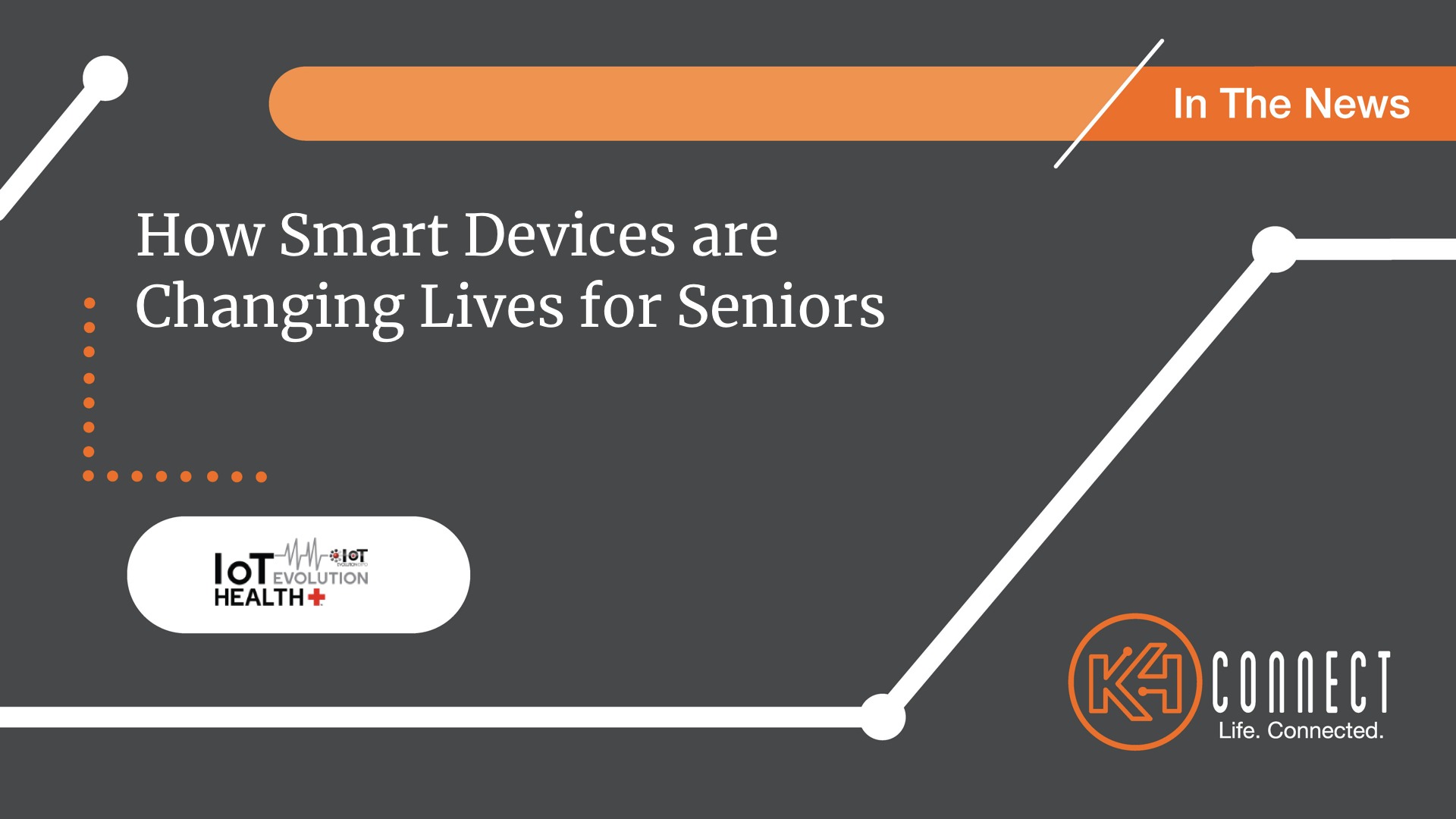Wearables and smart home devices are quickly on their way to becoming a “must-have” rather than a “nice-to-have” for older adults. The info they can provide to users, users’ families and their doctors can potentially save a life or correct an issue before it becomes a real problem.
By: Kuldip Pabla
Senior Vice President of Engineering, K4Connect
November 1, 2018
Smart home devices and wearables are revolutionizing our world in many ways and will continue to do so – in fact the U.S. market for wearables is expected to grow to 51 billion by 2022. Wearables have gone beyond simple personal fitness devices for monitoring heart rates to those that can now monitor blood glucose levels or even help protect against skin cancer. Sophisticated AR/VR devices, such as Google Glasses, are allowing surgeons to float medical images in their field of view during operations.
Wearables are also transforming elderly care, which will be critical in the years to come. By 2030, older adults are projected to outnumber children for the first time in U.S. history, with nearly 1 in every 5 U.S. residents of retirement age. This increase in the aging population combined with the rise in chronic illness will have tremendous impact on the U.S. healthcare system. Cardiovascular problems, along with diabetes and obesity are problematic for older populations. These diseases may be attributed to lack of physical movement, unhealthy lifestyle, or even bad posture – which wearable devices can help.
Tech has an important role to play
Technologies, such as Artificial Intelligence (AI) and smart devices, can help us predict –and sometimes even prevent – certain illnesses and play an important part in preventative care. In addition, smart devices for the home can help seniors overcome day-to-day physical challenges due to age or disabilities, and remain independent.
Wearable devices have an important role to play in assisting the elderly, but have shortcomings as well. For example, while the concept and function of the neck pendant to detect falls is fantastic, older adults are less inclined to adopt it, as they don’t want to be stigmatized as needing help or needing to be watched over. For a wider adoption, wearable devices will need to address sentiments of a senior as much as the functionality. Like beautiful jewelry, technology must be able to be a seamless part of seniors’ lives.
We need to ask more of smart devices. These devices possess a plethora of rich data that can be leveraged to take preventative or corrective actions. With the help of these devices, we can monitor and observe a user’s physical activities and gather data not just about the number of steps taken, but how those steps were taken. Were they quick or slow? Devices should track a user’s trend in how speed and movement has changed over time. Has the user slowed, begun limping, or altered activity overall? Coupled with AI, these insights can help predict if a user is prone to a chronic disease or chronic pain in the short or long term. This information can also alert the user to visit their doctor for further help – before a problem gets worse. Since the data is collected over time, doctors will have access to richer information instead of diagnosing a patient at a given moment, which only tells a small part of the story.
Check out the full story on IoT Evolution Health News, here
About the author: Kuldip Pabla is the Senior Vice President of Engineering at K4Connect. He oversees the continued development of K4Community, the company’s solution designed specifically for, and with, the residents and staff of senior living communities worldwide, as well as the development of future solutions planned for the home.
Edited by Ken Briodagh

